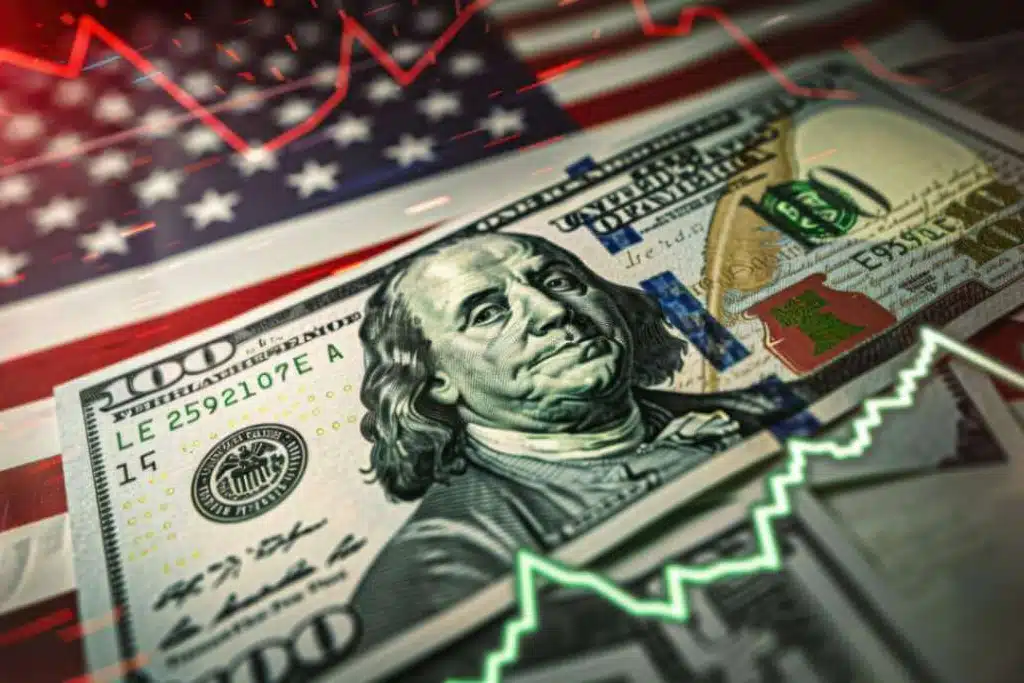Stock futures ticked higher Monday morning, reflecting renewed optimism on Wall Street after the U.S. reached a trade agreement with the European Union to reduce tariffs. The deal comes at the start of what analysts are calling a “pivotal week” for the financial markets, with major tech earnings, a key Fed meeting, and fresh labor and inflation data on deck.
Pre-Market Moves Reflect Positive Momentum
As of early Monday:
- Dow Jones futures gained 117 points (+0.26%)
- S&P 500 futures climbed 0.32%
- Nasdaq 100 futures advanced 0.5%
The rally follows President Donald Trump’s Sunday announcement that the U.S. will cut tariffs on EU imports to 15%, easing concerns of a potential 30% hike that had loomed over recent trade negotiations.
Market Riding High After Record Closes
Last week saw major indexes close at new highs:
- The Dow ended at 44,901.92 (+208 points)
- The S&P 500 logged its 14th record close of the year at 6,388.64
- The Nasdaq Composite reached 21,108.32, its 15th record close in 2025
Strong earnings, AI investment optimism, and recent global trade developments with Japan and Indonesia helped support those gains.
Nick Savone, senior strategist at Morgan Stanley, noted, “What we’re seeing is a blend of strong forward guidance, investor excitement around AI, and global trade diplomacy driving momentum into this week.”
Tech Giants Lead Earnings Parade
The spotlight now turns to earnings season, with more than 150 companies in the S&P 500 reporting this week. The focus will be on the “Magnificent Seven” tech giants:
- Meta and Microsoft report Wednesday
- Amazon and Apple follow on Thursday
Investor attention is laser-focused on these firms’ commentary regarding AI-related capital expenditures, which have significantly influenced tech stock performance in 2025.
Federal Reserve Policy Decision Looms
The Federal Open Market Committee (FOMC) begins its two-day policy meeting Tuesday. Markets broadly expect interest rates to remain unchanged in the 4.25%–4.5% range, but Fed Chair Jerome Powell’s guidance could shift expectations for a possible rate cut in September.
Inflation and Jobs Data Will Test Market Resilience
On Thursday, the Personal Consumption Expenditures (PCE) price index—the Fed’s preferred inflation gauge—will be released. Projections are:
- Annual PCE inflation: 2.4% (up from 2.3%)
- Monthly PCE inflation: 0.31% (up from 0.14%)
Friday brings the July jobs report, with economists estimating 115,000 new jobs added (down from 147,000 in June) and a slight increase in unemployment to 4.2%.
Other labor data expected this week include:
- JOLTS report (Tuesday)
- ADP private payrolls (Wednesday)
- Initial jobless claims (Thursday)
What It Means for Investors
With the global economy at a crossroads, market participants are preparing for volatility. The combination of trade diplomacy, Fed strategy, inflation pressures, and corporate earnings will test the strength of this year’s bull run.
Yet, the week is off to a hopeful start — and if earnings results align with investor expectations and inflation shows signs of cooling, the rally may have room to grow.
Final Take
A new U.S.-EU tariff agreement has injected confidence into global markets, just as traders navigate one of the busiest weeks of the financial year. Tech earnings, economic indicators, and Fed policy could all reshape sentiment in the days ahead — making this week one to watch.
Frequently Asked Questions
What caused U.S. stock futures to rise today?
Futures gained after the U.S. and European Union agreed to reduce tariffs, easing trade tensions and boosting investor confidence.
What companies are reporting earnings this week?
Over 150 S&P 500 companies are reporting, including Meta, Microsoft, Apple, and Amazon—part of the “Magnificent Seven” tech leaders.
Is the Federal Reserve expected to cut rates?
The Fed is not expected to cut rates this week, but investors will be watching for hints of a possible cut at the September meeting.
What is the expected inflation data this week?
The PCE price index is projected to show 2.4% annual inflation and 0.31% monthly growth, suggesting slightly rising price pressure.
How many jobs is the U.S. expected to add in July?
Economists forecast 115,000 new jobs, with a small uptick in unemployment to 4.2%, reflecting a cooling but still solid labor market.
For More Latest News & Information Visit Now! Digitalnewsalerts.


